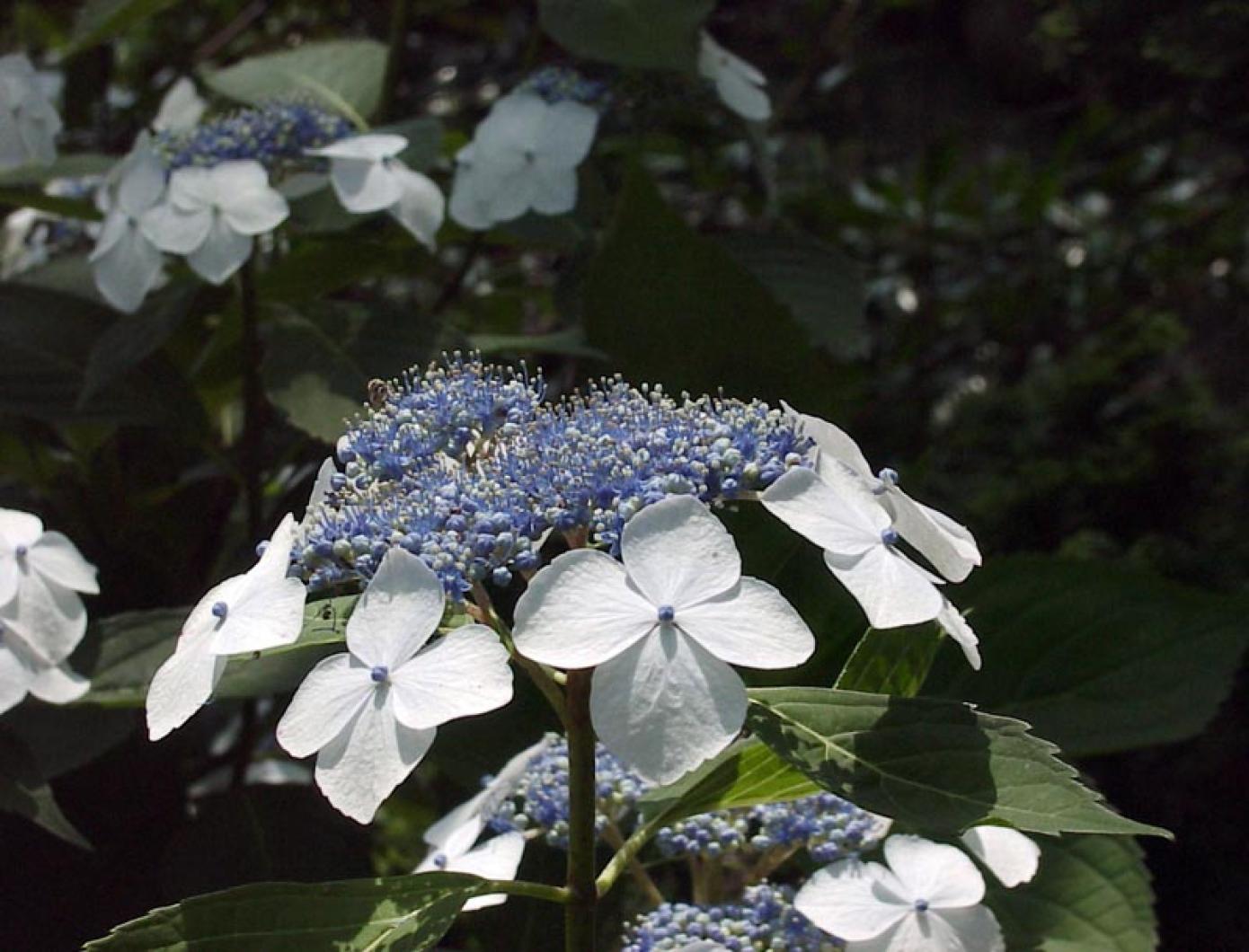Big, blue snowballs of hydrangeas backed by a white picket fence are a summer staple on the Vineyard. While the mophead flowers of bigleaf hydrangea (Hydrangea macrophylla) are the most popular with tourists, there is a whole world of hydrangeas for gardeners to explore. On a seed-collecting expedition to Japan in 2005, I encountered three other hydrangea species that are valuable ornamentals: the panicle hydrangea, (Hydrangea paniculata), the mountain hydrangea (Hydrangea serrata), and involucre hydrangea (Hydrangea involucrata).
The panicle hydrangea — an old-fashioned garden classic — has undergone a revival of interest among European breeders. The new cultivars have better forms, longer blooming periods, and more beautiful flowers. In 2003 at the famed Kalmthout Arboretum in Belgium, I observed many of the original plants. I was most impressed by Pink Diamond, Unique and Brussels Lace. The large, conical blooms of panicle hydrangea start out white and change to various shades of pink. These large shrubs reach eight to 10 feet in height and prefer full sun. Pruning can alter the shrub’s habit; the popular Pee Gee hydrangea is a type of panicle hydrangea that is often pruned to resemble a small tree.
In the mountains of Japan I noticed several tough plants of mountain hydrangea. I was impressed with their ability to grow in such an exposed environment. A smaller (three to five feet) shrub, H. serrata tolerates partial shade and makes an ideal foundation plant. The mountain hydrangea is closely related to the bigleaf hydrangea; however, as it grows in the wild at higher elevations, it tends to be hardier. Many of the cultivars are thought to be hybrids between the two species. Similar to the bigleaf, the flowers of mountain hydrangea comes in two shapes: the familiar mophead and the more delicate lacecap. At the Polly Hill Arboretum we have Tokyo Delight in the Playpen. This durable shrub has bloomed beautifully for over 30 years.
Another wonderful hydrangea native to Japan and Taiwan is Hydrangea involucrata. While we found plants growing wild in Japan near the ocean, we were unable to collect seed. Hortensis, a beautiful double-flowered selection of this species, is uncommon in gardens yet well worth seeking out. Its striking creamy white flowers have sepals that change to a deep rose color at maturity.
I have only written about three hydrangeas,; the diversity of garden-worthy shrubs and vines within this group is astounding. When beginning with hydrangeas, be certain to mulch and provide water in the first few years of establishment. I will also note that deer frequently munch on the succulent foliage and stems of hydrangea, but deer fencing coupled with the use of deer-repellent sprays will enable you to cultivate these plants and add summer color when few other shrubs are in bloom.
Tim Boland is executive director of the Polly Hill Arboretum in West Tisbury. This column appears every Tuesday.







Comments
Comment policy »